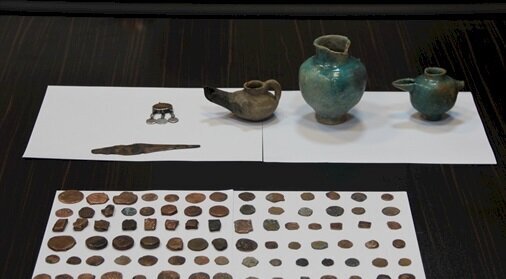Ancient coins recovered by Iranian police

TEHRAN – Iranian police have recovered a haul of ancient coins and earthenware from an authorized antique dealer in Abhar county, west-central Iran.
The dealer was caught red-handed in a place where he had made a rendezvous with a buyer, ISNA reported on Saturday.
A total of 117 centuries-old coins and three pieces of clay work were confiscated in that regard. The coins date back to the eras of Seljuks, Ilkhanates, Safavids, Afsharids, the report said.
In about 220 CE the Sasanian dynasty of Iran introduced the concept of thin flan coins, issues that were struck in relief on both sides. The Muslim conquest of Persia, also known as the Arab conquest of Iran, led to the fall of the Sasanian Empire of Iran (Persia) in ca. 651 and the eventual decline of the Zoroastrian religion. The rise of Muslims coincided with an unprecedented political, social, economic, and military weakness in Persia.
The conquering Muslims at first mimicked the coinage of their predecessors. In the western provinces, they issued gold and copper pieces imitated from contemporary Byzantine coins, modifying the cross on the reverse of the latter somewhat to suit Muslim sensibilities. In the eastern provinces, the Arab governors issued silver dirhams that were copies of late Sasanian coins (mostly of those of Khosrow II; with the addition of short Arabic inscriptions on the margin and often the name of the Arab governor in Pahlavi; even the crude representation of the fire altar was retained.
AFM
Leave a Comment